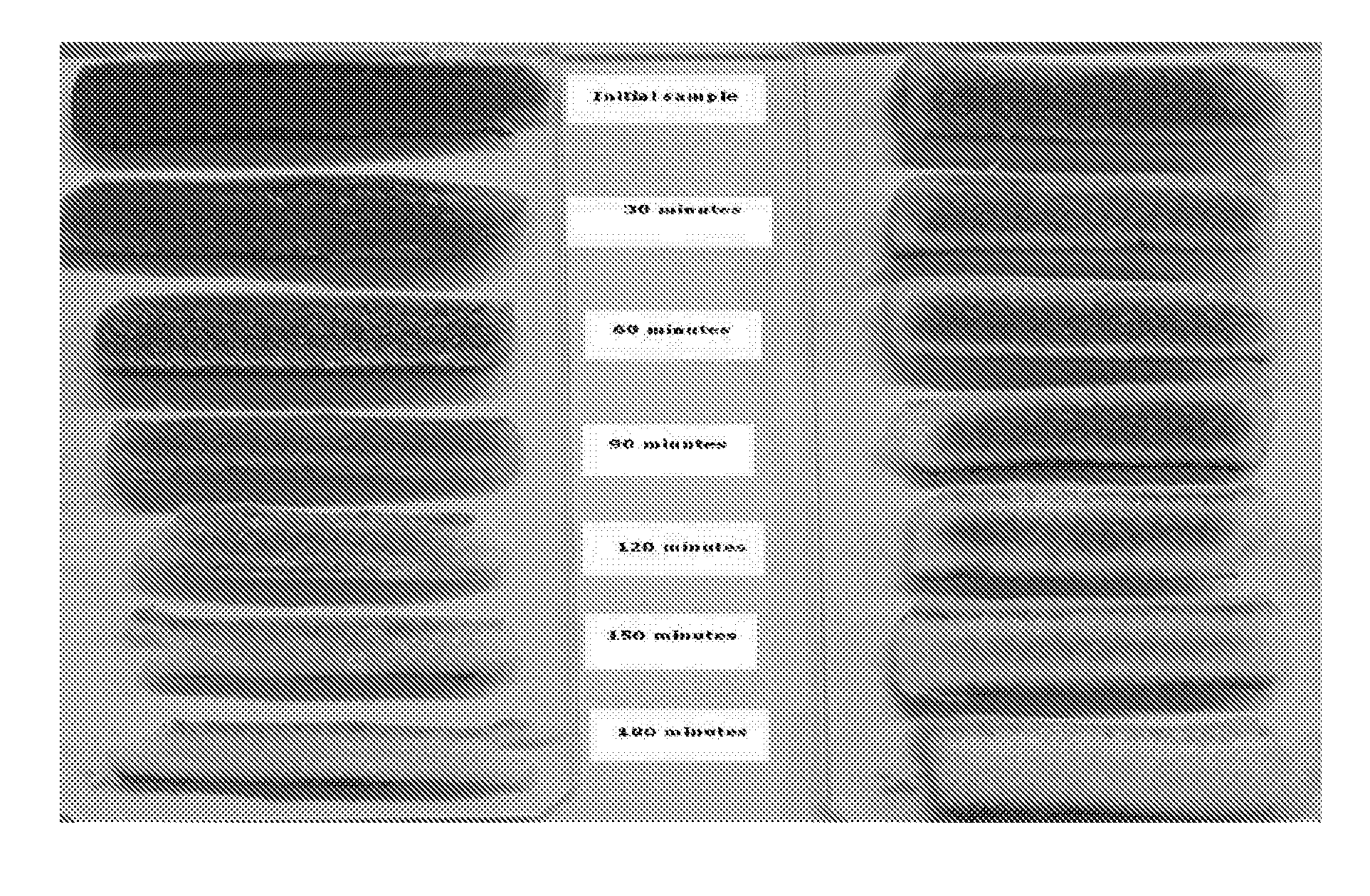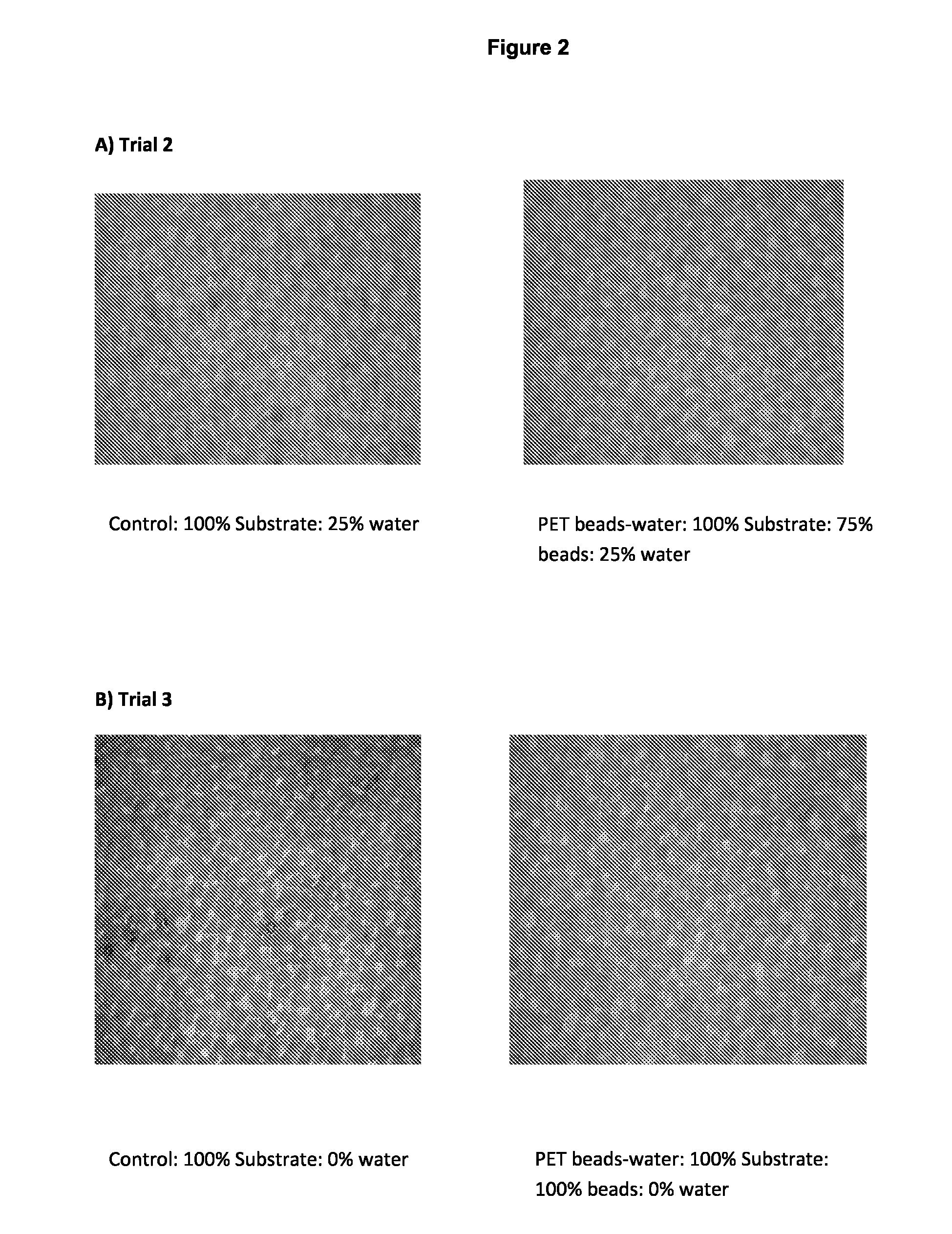Method for treating a substrate made of animal fibers with solid particles and a chemical formulation
a technology of solid particles and animal fibers, which is applied in the field of animal fiber treatment or processing, can solve the problems of long process time, high amount of polluting and environmentally damaging effluent produced by such processes, and low mechanical action, and achieve significant environmental benefits, facilitate the use of only limited amounts of water, and reduce the quantity of water used in the method of invention
- Summary
- Abstract
- Description
- Claims
- Application Information
AI Technical Summary
Benefits of technology
Problems solved by technology
Method used
Image
Examples
example 1
Initial Vegetable Tanning Trial
[0189]Vegetable tanning materials, such as Tara and Mimosa, are water extracted from plant leaves, tree bark etc. and represent a traditional method of tanning leather. As a primary tannage, vegetable tanning has been almost completely superseded by chrome tanning methodology, but does have niche applications such as antique book binding. However, vegetable tanning extracts are still commonly used in retanning (secondary tannage) processes used for the production of leathers intended for use in shoe-uppers and furniture. These extracts consist of large acidic polyphenol molecules, and are similar to the tannins found in tea. This vegetable tanning process can be considered as a dehydration of the wet collagen protein, replacing the water molecules with a sheath of vegetable tan molecules.
[0190]Matched side samples of a pickled hide (bovine, Scottish Leather Group, UK) were depickled (acid removed) and pretanned with glutaraldehyde (Derugan 3080, Schill...
example 2a
Initial Chrome Tanning Trial
[0193]The tanning step is the essential preservation stage in leather manufacture. The process converts the collagen protein in the raw hide into a stable material that resists putrefaction, and then acts as a foundation for introducing further chemistry that ultimately produces the required aesthetic characteristics of finished leather articles. The vast majority of leather tanning involves chromium III salts, which act by linking and locking the collagen protein strands together.
[0194]In this example, matched-side chrome tanning trials were carried out on 3.5 mm thick hide pelts (bovine, Scottish Leather Group, UK). Chrome tanning was carried using 6% (w / w) Chromosal B from Lanxess GmbH, Leverkusen, Germany (25% Chromic oxide, 33% basicity). Treatment cycles were carried out in Dose drums (Ring Maschinenbau GmbH (Dose), Lichtenau, Germany) (model 08-60284 with an internal volume of 85 L).
[0195]Experiments were conducted using one set of process mediums ...
example 2b
Further Chrome Tanning Trial Using Polymeric Particles
[0201]Matched-side chrome tanning trials were carried out on 4.5 mm thick bovine hide / pelts (Scottish Leather Group, UK). For the trials, chrome tanning was carried using 4.5% (w / w) (i.e. a 25% reduction over the conventional 6% w / w usage) Baychrome A from Lanxess GmbH, Leverkusen, Germany (21% Chromic oxide, 33% basicity). A further control sample was processed using the standard chrome amount, 6.0% (w / w) Baychrome A from Lanxess chemicals Ltd UK (21% Chromic oxide, 33% basicity). Tanning was carried out at 55° C., the initial pH was 2.7±0.1 and the final pH was 4.0±0.1. Treatment cycles were carried out in Dose drums (Ring Maschinenbau GmbH (Dose), Lichtenau, Germany) (model 08-60284 with an internal volume of 85 L). Teknor Apex™ grade TA101M (Polyester—PET) supplied by Teknor Apex UK were used in the trials. The ullage (i.e. free space) in the drum for all trials was kept constant at 68%.
[0202]To assess whether preservation of...
PUM
| Property | Measurement | Unit |
|---|---|---|
| density | aaaaa | aaaaa |
| density | aaaaa | aaaaa |
| average mass | aaaaa | aaaaa |
Abstract
Description
Claims
Application Information
 Login to View More
Login to View More - R&D
- Intellectual Property
- Life Sciences
- Materials
- Tech Scout
- Unparalleled Data Quality
- Higher Quality Content
- 60% Fewer Hallucinations
Browse by: Latest US Patents, China's latest patents, Technical Efficacy Thesaurus, Application Domain, Technology Topic, Popular Technical Reports.
© 2025 PatSnap. All rights reserved.Legal|Privacy policy|Modern Slavery Act Transparency Statement|Sitemap|About US| Contact US: help@patsnap.com



